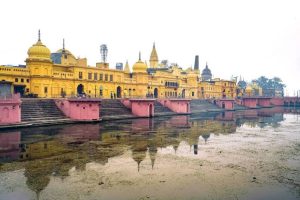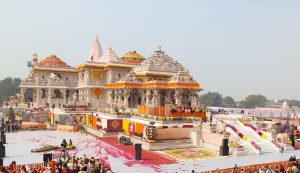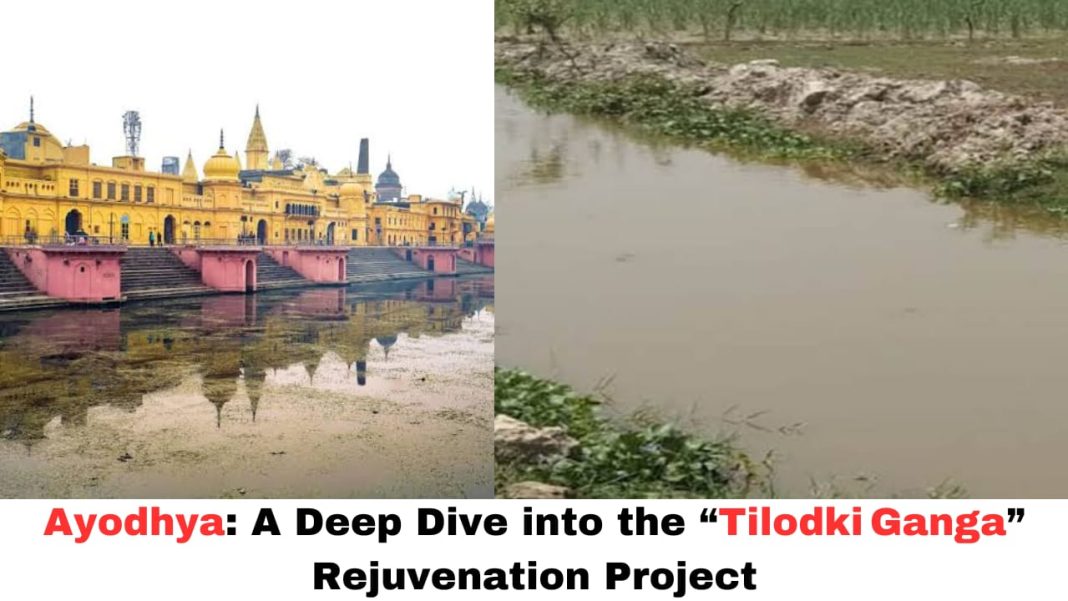Digital News Guru Uttar Pradesh Desk:
Ayodhya’s Hidden Lifeline: How UP Plans to Bring Back the Tilodki Ganga
In a bold and culturally resonant move, the Uttar Pradesh government has launched an extensive initiative to restore the ancient Tilodki Ganga, also known as Triloki Ganga, in Ayodhya. This endeavour marks the first phase of chief minister Yogi Adityanath’s “One District, One River” program. With a focus on the 7‑kilometer stretch from Gaura Brahmanan to Panditpur in the Sohawal area, the project seeks to reclaim a waterway deeply embedded in local history, mythology, and ecology.
Historical & Cultural Significance
The Tilodki Ganga historically flowed nearly 46 km from Panditpur through Sohawal, eventually merging with the Sarayu. Ancient texts—such as the Skanda Purana—and local folklore attest to its Ramayana-era prominence, where it served as a sacred water source for rural communities. Known locally as the Tilaiyā in earlier times, it also holds spiritual importance as the “divine site of Maharshi Raman,”.

During summers, residents traditionally depended on this river for irrigation, bathing, and ritual cleansing. Over time, however, aggressive encroachment and unchecked development—including industrial complexes and airport expansion—led to its disappearance from both landscape and memory.
Why Restoration Is Critical
Environmental Concerns
The National Green Tribunal (NGT) intervened after recognizing serious pollution and encroachment. This included untreated wastewater from a bottling plant and waterlogging caused by nearby airport construction. Environmental activists have also voiced concerns that unchecked development deprived local villages of drainage, jeopardizing both public health and agriculture .
Ecological Recovery
Reopening the river channel is vital for groundwater recharge, prevention of waterlogging, and re-establishing habitats for fish and aquatic life. The planned tree plantation drive along the banks is expected to stabilize soil, create ecological corridors, and enhance biodiversity.
Sociocultural Revival
Restoring the river will reconnect communities with their ancestral water source, bringing livelihood and tourism prospects. The revived riverbanks—with their historical resonance—could attract pilgrims, heritage tourists, and help unlock eco-friendly development opportunities.
Project Blueprint: Phase One Detailed
Scope & Location
- Length: 7 km stretch between Gaura Brahmanan and Panditpur in Sohawal—first part of a larger 46 km revival.
Execution Partners
- Labour Deployments: Approximately 250 local labourers, employed via the MNREGA programme, are clearing encroachments, removing silt and solid waste, preparing the bed for water flow.
Timeline Overview
- Cleanup Completion: Target is June 30, 2025. All debris, structural barriers, and illegal constructions on riverpad will be addressed .
- Restoration Phase: From July 1–7, a large-scale tree plantation drive will follow, aligning with environmental efforts seen in Namami Gange projects.

Strategic Alignment with Broader Initiatives
Namami Gange & River Revival
UP’s statewide campaign mirrors the logic behind Namami Gange, which revitalized river stretches nationwide. Over Rs 14,823 crore has been allocated for sewage treatment and pollution control throughout UP, with numerous STPs already established. However, the execution gaps flagged by NGT highlight the delicate nature of project compliance.
Tourism & Heritage Infrastructure
Ayodhya’s rapid infrastructural transformation—including a new international airport and enhanced Ghats—places heritage conservation at the forefront. An allotment of ₹150 crore specifically for tourism development underscores this prioritization. Reviving Tilodki Ganga aligns with this broader tourism narrative.
Quality Governance
NGT’s insistence on detailed pollution mapping, accountability, and clarity involving STPs sets a high bar for operational transparency.
Challenges & Risks
- Encroachment Reversal: Dismantling structures on once-private land could face steep legal resistance.
- Industrial Compliance: Monitoring wastewater discharge demands enforcement capability.
- Maintaining Flow: Initial cleanup must be complemented with sustained water inflow to avoid re-pollution.
- Community Stakeholding: Engagement strategies will be crucial to ensure farming groups and villagers uphold restoration efforts—akin to the community success around Ganga dolphins recovery.
Visionary Impact & Future Steps
Expanded Revitalization
If the pilot succeeds, the restoration will extend along the remaining 39 km, stretching the river’s reach and influence across Ayodhya’s rural heartland.
Integrated Heritage Tourism
Rejuvenation can fuel eco-tours, cultural walks, and pilgrim pathways, especially when linked to other heritage landmarks and ghats.
Green Urban Infrastructure
Planting along riverbanks could significantly improve air quality, soil conditions, and flood control—mirroring the success of similar greening initiatives in UP.

Enforcing Environmental Governance
Robust transparency—through publicly available data on water quality, STP functionality, and responsible administration—aligns with NGT directives and promotes trust.
Conclusion
The Tilodki Ganga revival is more than an ecological project—it’s a culturally resonant endeavor that intertwines social, environmental, and spiritual threads. If successful, it could become a model for river rejuvenation nationwide.
As the June 30 deadline approaches, all eyes are on Ayodhya to see if this ancient river can reclaim its place at the heart of rural life, tradition, and ecological stewardship.
You May Also Read: Gorakhpur–Patliputra Vande Bharat Express Launched, Patna to Gorakhpur in 7 Hours








